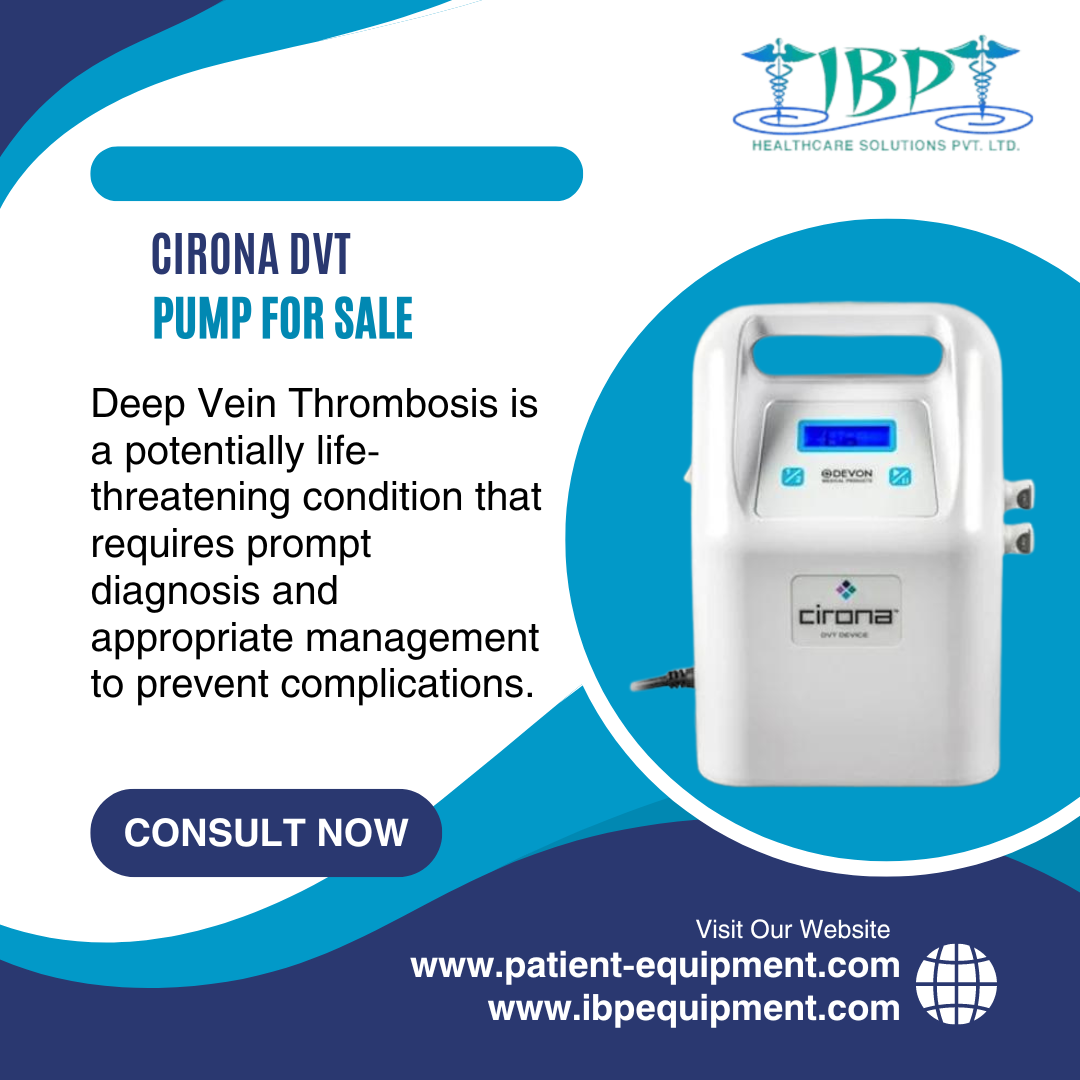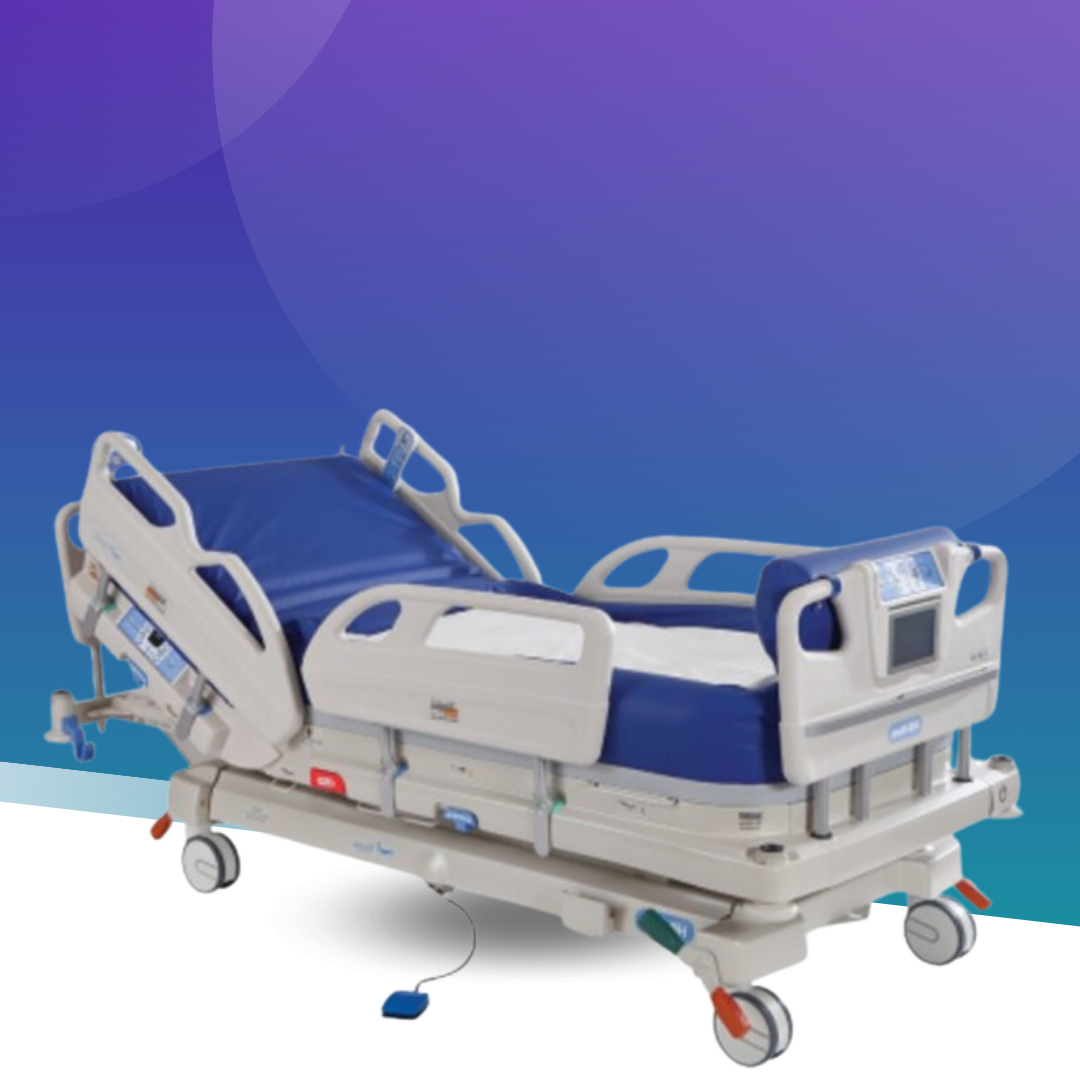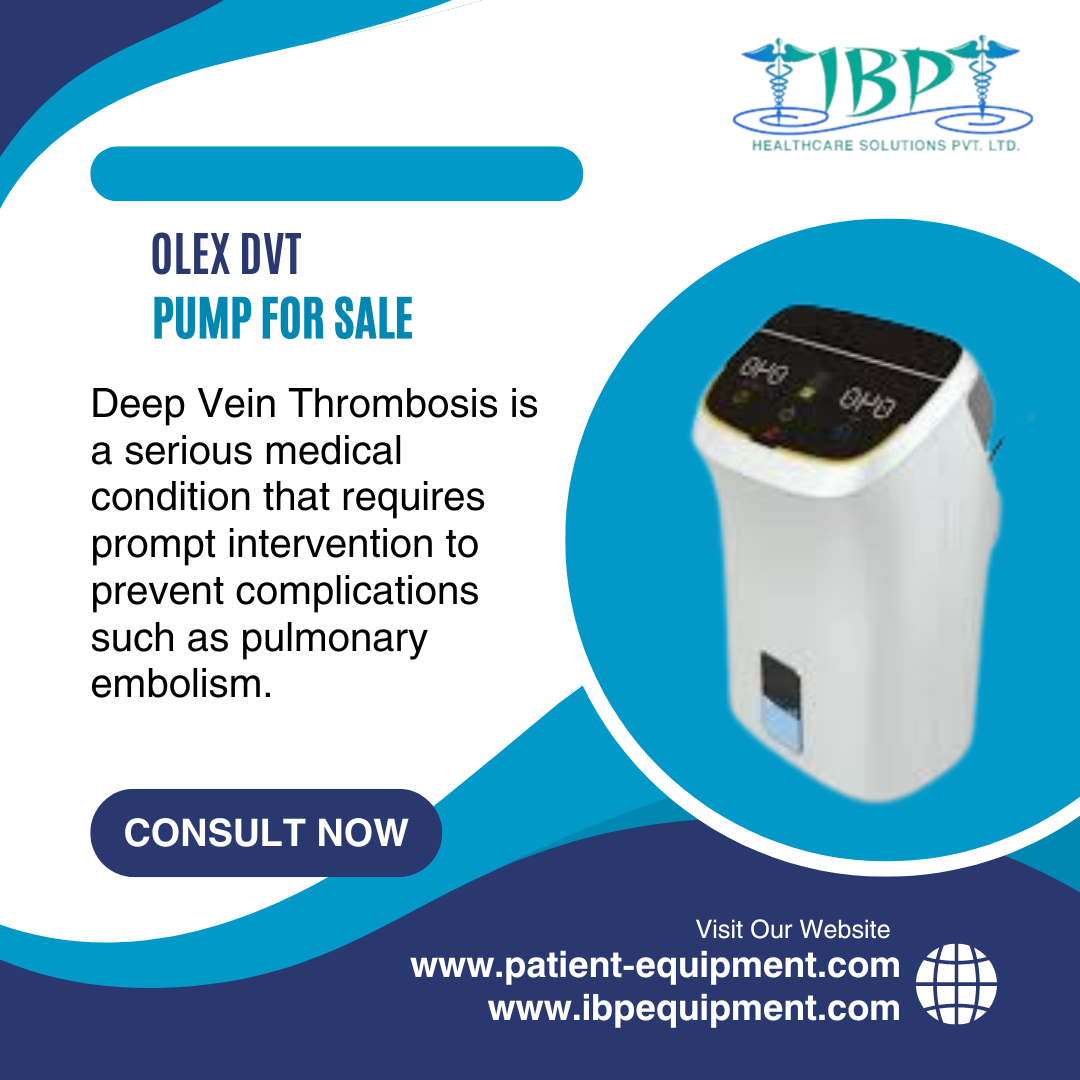
CIRONA DVT PUMP ON SALE
Deep Vein Thrombosis (DVT) is a serious medical condition characterized by the formation of blood clots within deep veins, typically in the legs. If left untreated, these clots can break loose and travel through the bloodstream, potentially causing life-threatening complications such as pulmonary embolism. Prevention and management of DVT are crucial aspects of modern healthcare, and compression therapy has emerged as a cornerstone in both prevention and treatment strategies. In this article, we delve into the complexities of DVT, explore the mechanisms and benefits of compression therapy, and shed light on the importance of accessible solutions like the Cirona DVT Pump by ibp healthcare.
- Category: dvt pump for sale
CIRONA DVT PUMP ON SALE
Deep Vein Thrombosis (DVT) is a serious medical condition
characterized by the formation of blood clots within deep veins, typically in
the legs. If left untreated, these clots can break loose and travel through the
bloodstream, potentially causing life-threatening complications such as
pulmonary embolism. Prevention and management of DVT are crucial aspects of
modern healthcare, and compression therapy has emerged as a cornerstone in both
prevention and treatment strategies. In this article, we delve into the
complexities of DVT, explore the mechanisms and benefits of compression
therapy, and shed light on the importance of accessible solutions like the
Cirona DVT Pump by ibp healthcare.
Understanding Deep Vein Thrombosis
To comprehend the significance of compression therapy in DVT
management, it's essential to grasp the fundamentals of the condition itself.
DVT occurs when a blood clot forms in one or more of the deep veins in the
body, commonly in the legs. Several factors contribute to the development of
DVT, including prolonged immobility, surgery, obesity, pregnancy, smoking, and
certain medical conditions such as cancer and inherited blood-clotting
disorders.
The symptoms of DVT can vary but often include swelling,
pain, warmth, and redness in the affected limb. However, it's worth noting that
DVT can also occur without any noticeable symptoms, making it a silent yet
potentially deadly condition. If a blood clot dislodges and travels to the
lungs, it can lead to a pulmonary embolism, which may result in difficulty
breathing, chest pain, rapid heartbeat, and even sudden death if not promptly
treated.
Given the severity of its complications, DVT warrants
serious attention from both healthcare professionals and the general public.
Prevention strategies are crucial, especially for individuals with risk factors
such as recent surgery, prolonged bed rest, or a history of blood clots.
Compression Therapy: A Pillar of DVT
Management
Compression therapy plays a pivotal role in both preventing
and treating DVT. The primary goal of compression therapy is to improve blood
circulation in the lower limbs, thereby reducing the risk of clot formation and
aiding in the dissolution of existing clots. This is achieved through the
application of external pressure to the legs using specialized garments or
devices.
There are several mechanisms through
which compression therapy exerts its beneficial effects on DVT:
1. Enhancing Blood Flow: Compression garments or
devices exert graduated pressure on the legs, with the highest pressure at the
ankles gradually decreasing towards the thighs. This compression helps to push
blood upwards towards the heart, counteracting the effects of gravity and
preventing blood from pooling in the veins of the lower limbs.
2. Reducing Venous Stasis: Prolonged immobility, such as
during long flights or bed rest, can lead to stagnation of blood flow in the
veins, increasing the risk of clot formation. Compression therapy promotes
venous return by preventing stasis and maintaining the functional integrity of
the venous valves.
3. Preventing Edema: Swelling of the legs, known
as edema, is a common complication of DVT. Compression therapy helps to
alleviate edema by facilitating the drainage of excess fluid from the tissues,
thereby reducing swelling and discomfort.
4. Supporting Muscle Pump Function: The calf muscles play a
crucial role in venous return, acting as a "muscle pump" to propel
blood towards the heart. Compression therapy supports the function of the
muscle pump by providing external pressure that enhances muscle contraction and
venous emptying.
The Cirona DVT Pump by ibp
healthcare: A Solution for Effective Compression Therapy
In the realm of compression therapy for DVT management, the
Cirona DVT Pump by ibp healthcare stands out as a reliable and innovative
solution. Designed with patient comfort and convenience in mind, the Cirona DVT
Pump offers a range of features and benefits that make it an ideal choice for
both healthcare facilities and individual patients.
Key features of the Cirona DVT Pump
include:
1. Portable Design: The compact and lightweight
design of the Cirona DVT Pump allows for easy transport and use in various
settings, including hospitals, rehabilitation centers, and home care
environments. Patients can benefit from compression therapy wherever they are,
without being confined to a hospital bed.
2. Customizable Settings: The Cirona DVT Pump offers
customizable pressure settings to accommodate the unique needs and preferences
of each patient. Healthcare providers can adjust the level of compression based
on the severity of the DVT, ensuring optimal therapeutic outcomes.
3. Intuitive Interface: With an easy-to-use interface
and clear instructions, the Cirona DVT Pump simplifies the process of
compression therapy for both patients and caregivers. Intuitive controls and
indicators allow for hassle-free operation and monitoring of treatment
sessions.
4. Quiet Operation: Unlike traditional
compression devices that may produce loud noise during operation, the Cirona
DVT Pump operates quietly, minimizing disruption and promoting patient comfort.
This makes it suitable for use in various healthcare settings, including
hospital wards and patient rooms.
5. Enhanced Compliance: Compliance with compression
therapy is essential for its effectiveness in preventing and treating DVT. The
Cirona DVT Pump promotes patient compliance by offering a comfortable and user-friendly experience, thereby increasing the
likelihood of adherence to prescribed
treatment regimens.
Conclusion
In the fight against Deep Vein Thrombosis (DVT), compression
therapy emerges as a valuable ally, offering a range of benefits in both
prevention and treatment. By improving blood circulation, reducing venous
stasis, alleviating edema, and supporting muscle pump function, compression therapy
plays a crucial role in mitigating the risks associated with DVT and enhancing
patient outcomes.
Accessible solutions like the Cirona DVT Pump by ibp
healthcare further strengthen the arsenal of tools available to healthcare
providers and patients in the management of DVT. With its portable design,
customizable settings, intuitive interface, quiet operation, and enhanced
compliance features, the Cirona DVT Pump exemplifies the evolution of
compression therapy towards greater efficacy, convenience, and patient
satisfaction.
As we continue to advance in our understanding and
management of DVT, compression therapy remains a cornerstone of care, offering
hope and healing to individuals affected by this potentially life-threatening
condition. Through ongoing innovation and collaboration, we can strive towards
a future where DVT is effectively prevented, diagnosed, and treated, improving
the quality of life for patients around the world.
Enquiry Now
Related Products
Shopping Over $59 or first purchase you will get 100% free shipping
 (1).png)

.png)
.png)
.png)
.png)
.png)
.png)
.png)
